I was very fortunate to recently visit South Africa and Zimbabwe after a veterinary conference. Since 100% of the pet owners we meet are animal lovers, I thought I would share some information and pictures about his incredible trip.
In the heart of South Africa and Zimbabwe, two majestic species roam the bush: the black rhino and the white rhino. Both are iconic symbols of the wild, yet their survival is threatened by poaching and habitat loss. Let’s explore the fascinating world of rhinos, and the challenges they face.
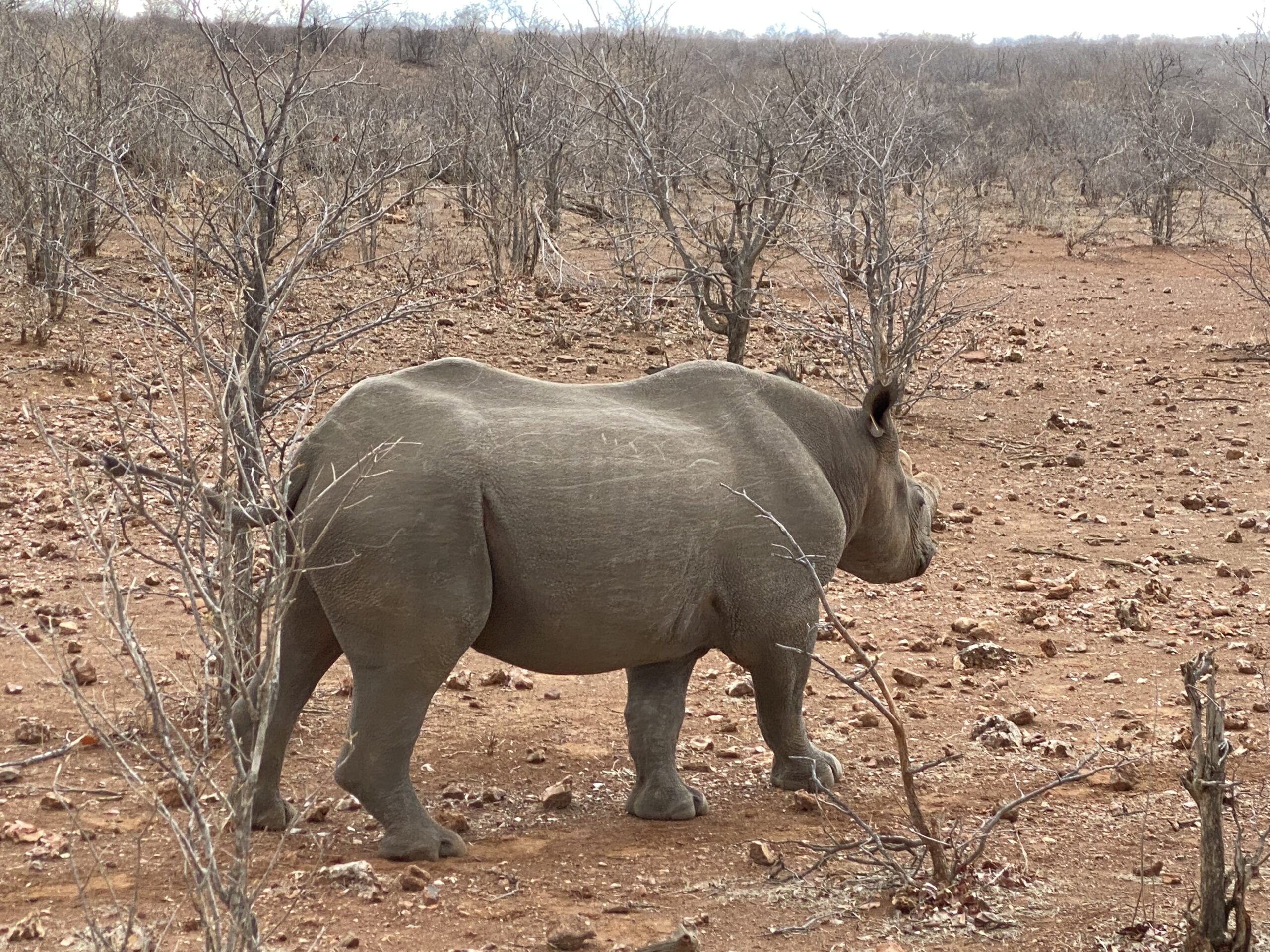
A Tale of Two Rhinos: Black and White
Despite their names, the black and white rhinos are distinguished not by color but by the shape of their mouths.
The white rhino has a wide, square-shaped mouth adapted for grazing on grass.
This feature is what gave rise to their name, though it’s actually a mistranslation of the Afrikaans word wyd, meaning “wide,” not white.
In contrast, black rhinos have a more pointed, hooked lip ideal to eat leaves and twigs.
White rhinos tend to be significantly larger than black rhinos.
A white rhino can weigh up to 5,000 lbs (2,300 kg), while a black rhino doesn’t usually go over 2,200 lbs (1,000 kg).
You can also differentiate the 2 species by observing the hump behind their heads.
The white rhino (the heavier of the 2) has a more pronounced hump, which is caused by the large muscles of the neck, to support their large head.
The black rhino has a less prominent hump and a smaller head.
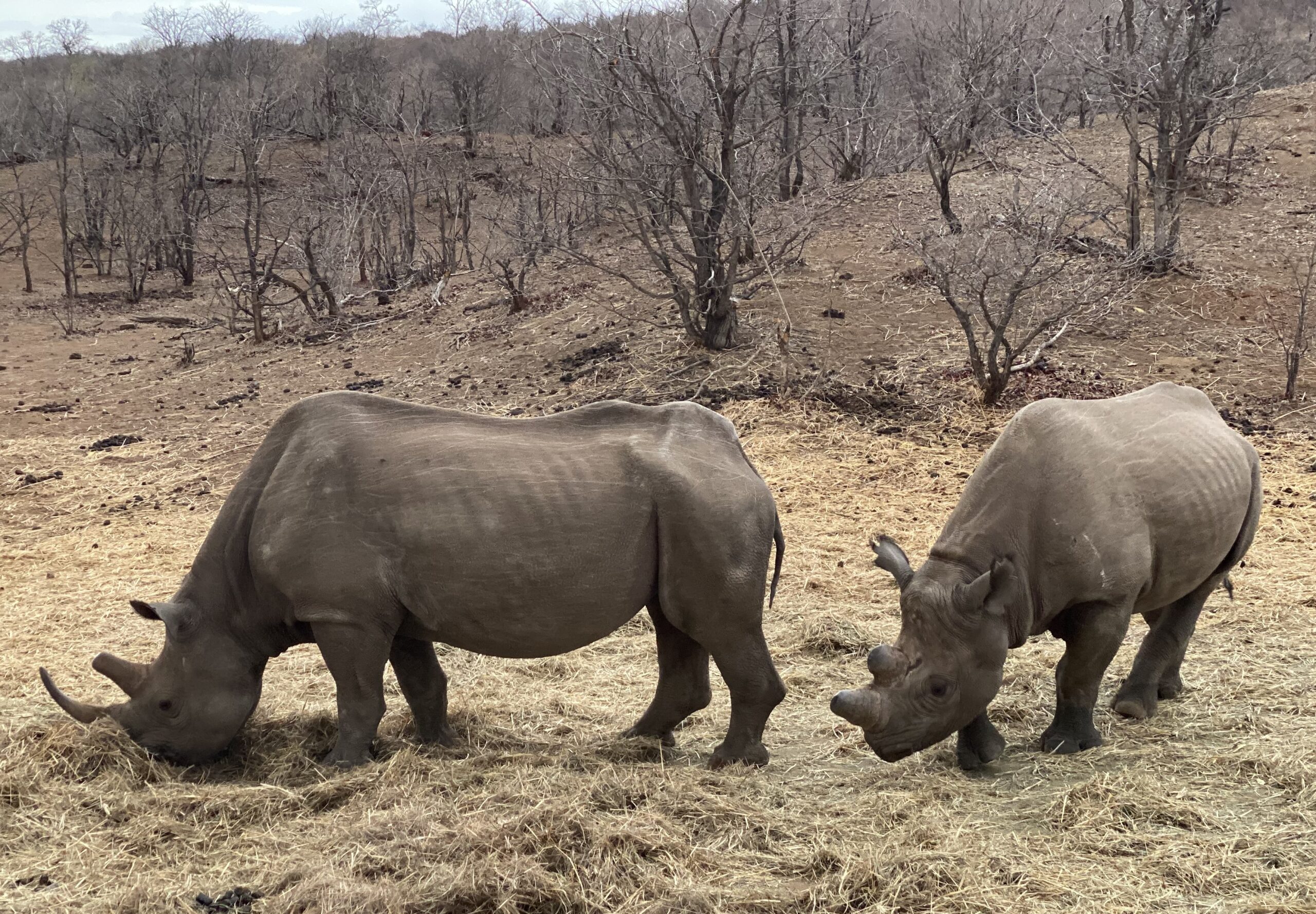
The rhino with horns is a 42 year old female. The park rangers are concerned about sedated her, so they don’t cut her horns anymore. The younger male’s horns are growing back after they were cut off to prevent poachers from killing him.
The Endangered Giants: Poaching and Conservation Challenges
Both the black and white rhinos are endangered, with black rhinos classified as critically endangered.
The main threat to their survival is poaching, driven by the illegal demand for rhino horns, which are mistakenly believed to have medicinal properties, primarily in black markets in Asia.
Rhino horns are made of keratin, the same protein found in human hair and nails, and they hold no actual medicinal value.
Despite ongoing anti-poaching efforts, the high value of rhino horns on the black market continues to fuel illegal activity, putting these magnificent creatures at risk.
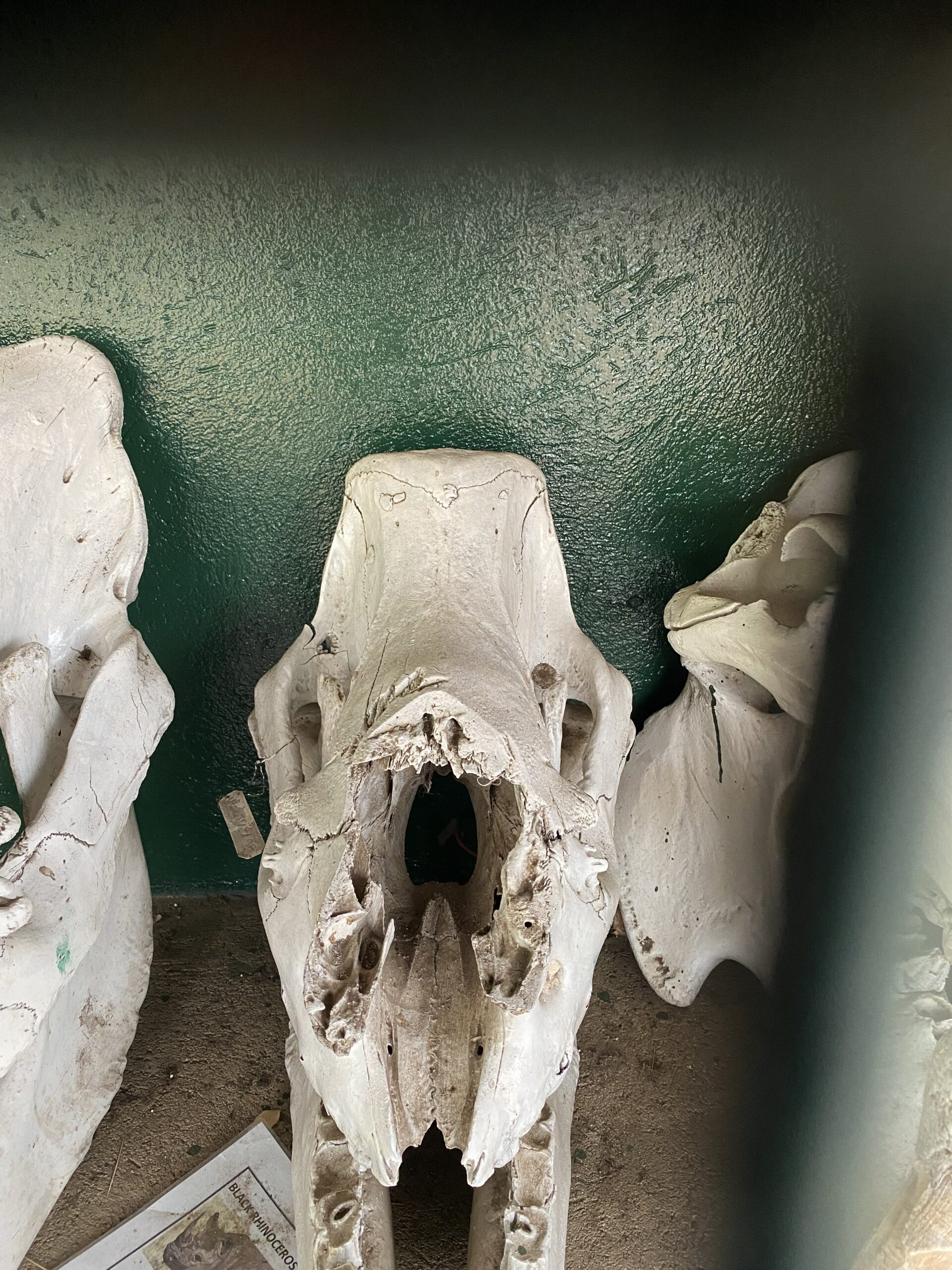
This rhino skull shows the damage created by poachers when they removed this rhino’s horn, after killing him.
Rhinos in the Wild: Unique Behaviors
Rhinos are fascinating creatures with a range of unique traits.
Despite their size, they are agile and can run at speeds of up to 30 mph (50 km/h) over short distances.
Though their eyesight is poor, rhinos rely on their excellent senses of smell and hearing to navigate their surroundings and detect predators or threats.
Their thick skin, measuring up to 2 inches (5 cm), acts as an armor, protecting them from thorns, insects, and the sun.
However, it’s still susceptible to sunburn and parasites, which is why rhinos love to wallow in mud.
This behavior helps cool them down, protect their skin, and keep insects at bay.
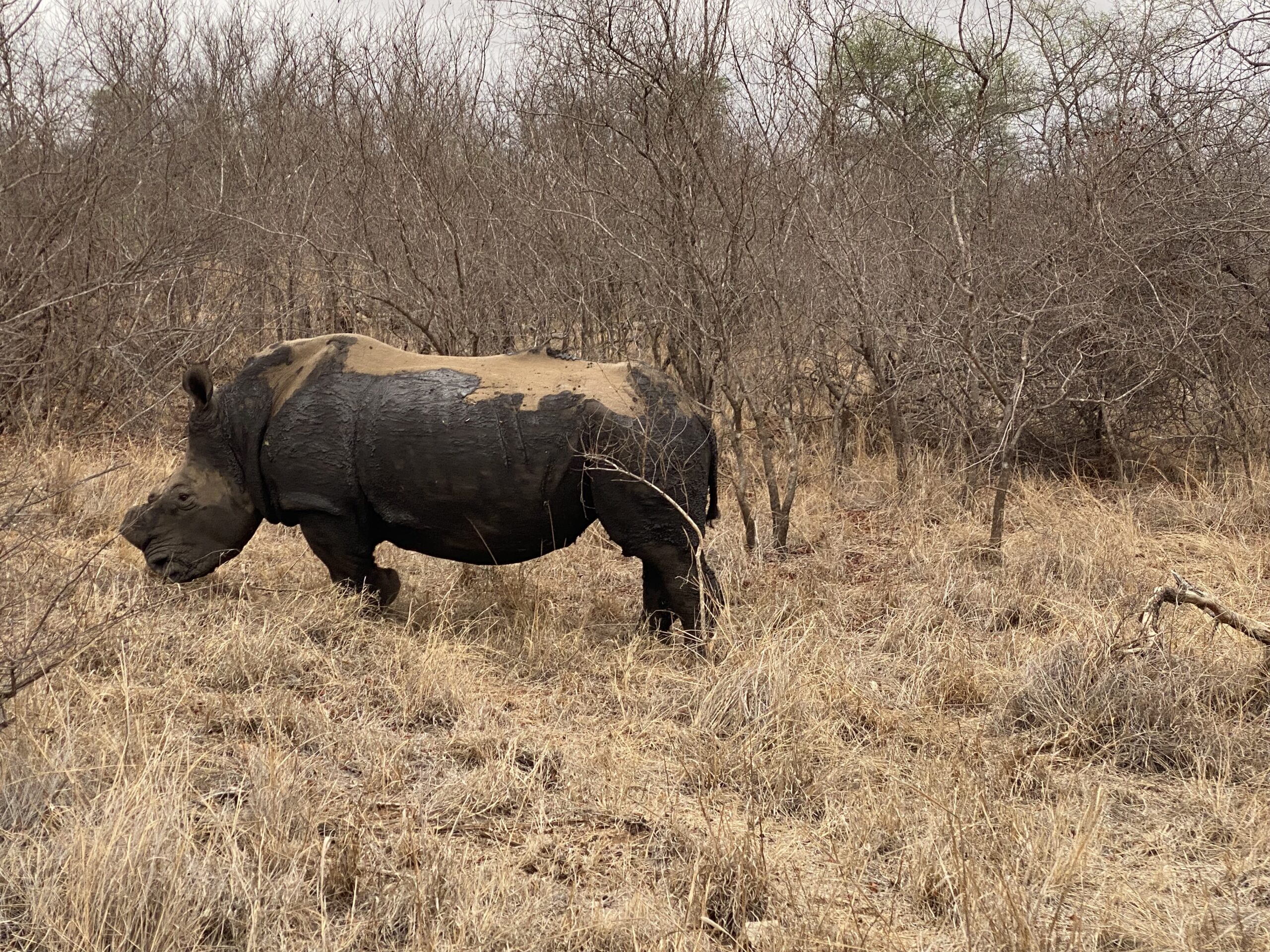
The mud on this black rhino protects him from the sun.
Rhino Mothers and Calf Bonding
Rhinos are devoted parents, particularly when it comes to raising their young.
Female rhinos typically give birth to a single calf after a long 16-month pregnancy.
The bond between mother and calf is strong, with young rhinos staying with their mothers for up to 3 years before they venture out on their own.
This extended care period ensures that the calf is well-prepared for independence in the wild.
Rhinos and Their Role in the Ecosystem
Rhinos play an essential role in shaping their habitats.
Their grazing and browsing habits help maintain the balance of vegetation, creating a diverse environment for other species.
Additionally, rhinos have a symbiotic relationship with oxpeckers (a symbiosis is a mutually beneficial relationship between different animal species).
Oxpeckers are small birds that feed on ticks and can alert rhinos to the presence of predators.
This mutualistic relationship benefits both species, ensuring the health and safety of the rhino while providing delicious food for the birds.
Conservation Efforts: A Fight for Survival
South Africa and Zimbabwe are leaders in rhino conservation, implementing a variety of strategies to protect these endangered animals.
Anti-poaching measures, including armed patrols and surveillance, are essential in combating the illegal wildlife trade.
In addition, rhinos are sometimes relocated to safer areas or private reserves to reduce the risk of poaching.
Breeding programs help boost rhino populations, though the fight remains difficult and ongoing.
We were fortunate to visit a reserve in Zimbabwe (Victoria Falls Private Game Reserve) that has a successful breeding program for rhinos.
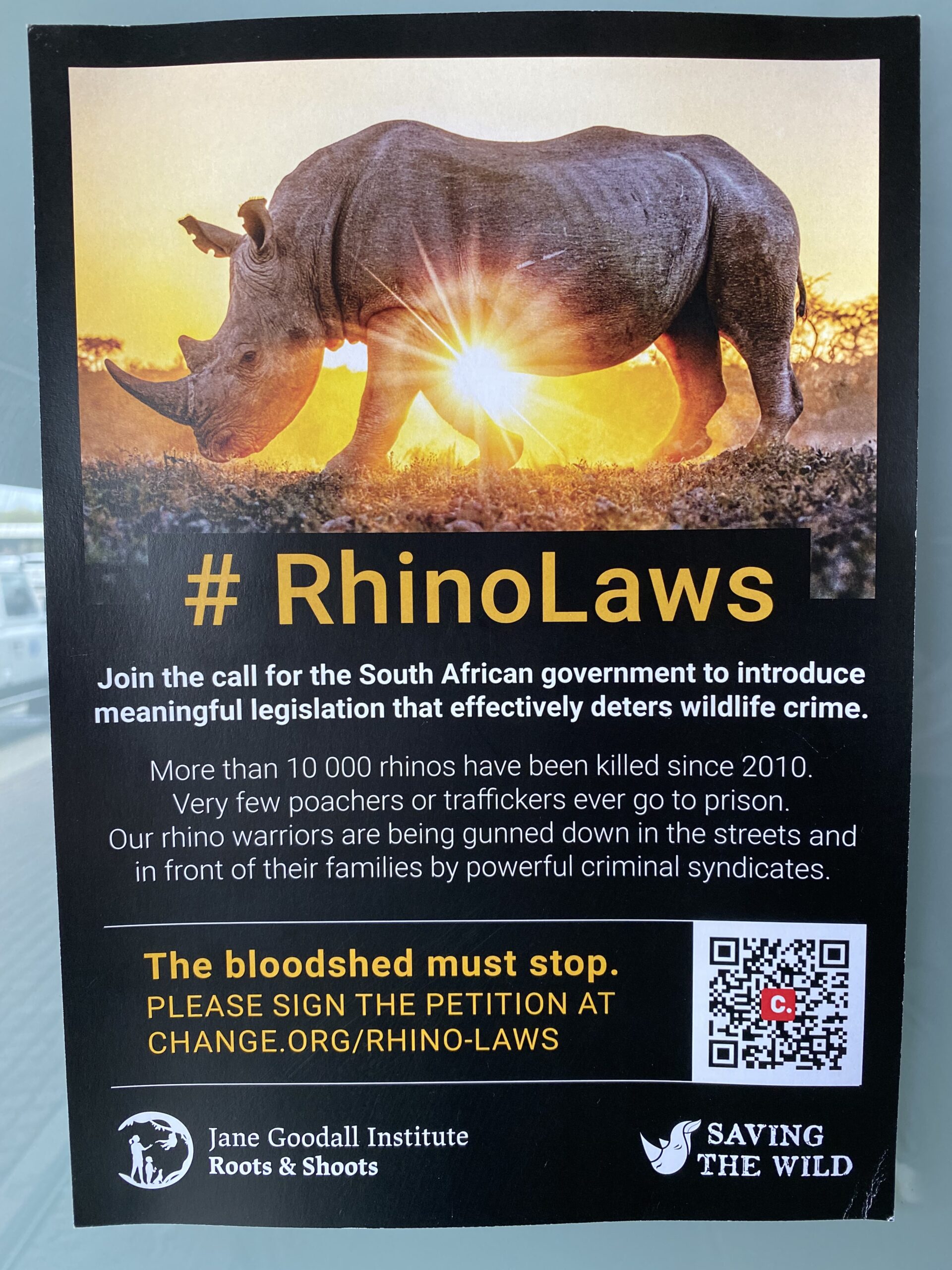
The Road Ahead: A Call for Continued Protection
The story of South Africa’s and Zimbabwe’s rhinos is one of resilience, but it is also one of urgency.
These incredible creatures are not only vital to the ecosystems they inhabit, but they also represent the struggle to preserve the natural world.
The efforts to protect rhinos are ongoing, and every action taken – from anti-poaching initiatives to habitat preservation – plays a critical role in ensuring their survival.
By supporting rhino conservation, we help safeguard the future of these iconic animals and the delicate balance of life they sustain.
Safeguarding these magnificent creatures is not just about saving them – it’s about preserving the beauty and biodiversity of the natural world for generations to come.
We can’t help your rhino, but if you would like to learn how we can help your cat or your dog with safe surgery and anesthesia, please contact us through www.HRVSS.com
Never miss a blog by subscribing here: www.HRVSS.com/blog
Phil Zeltzman, DVM, DACVS, CVJ, Fear Free Certified
